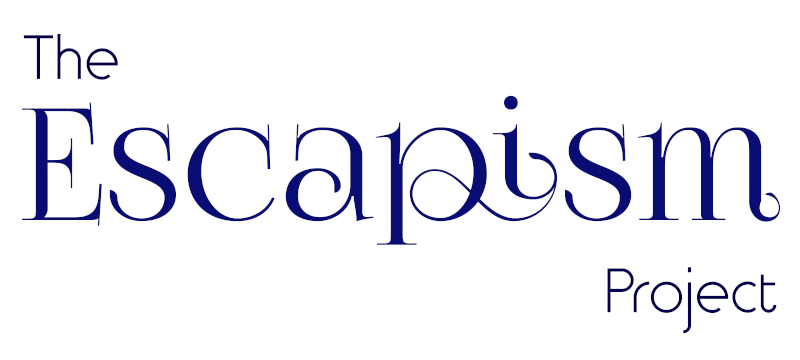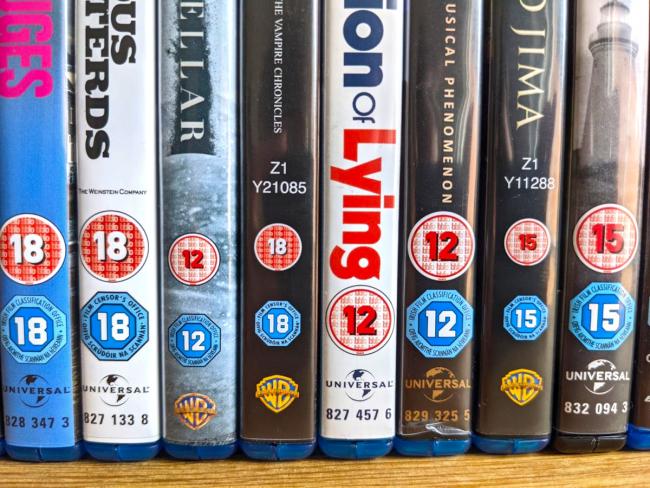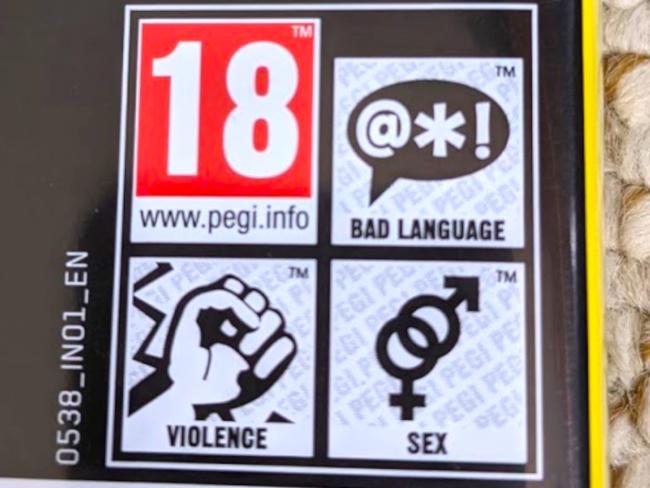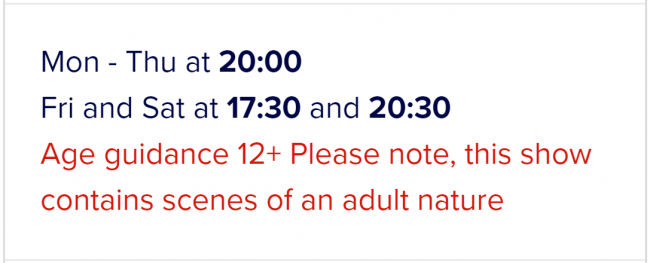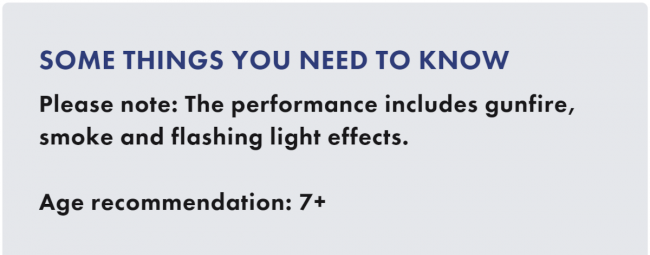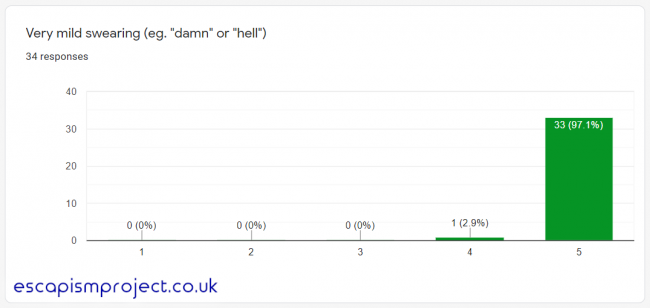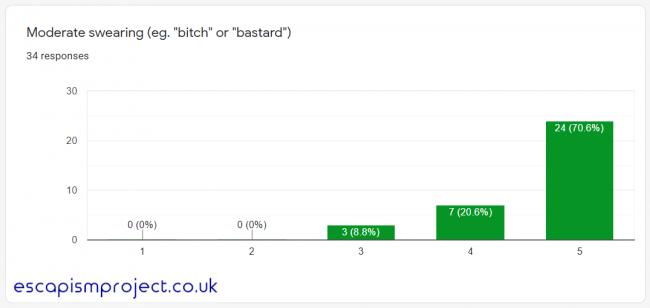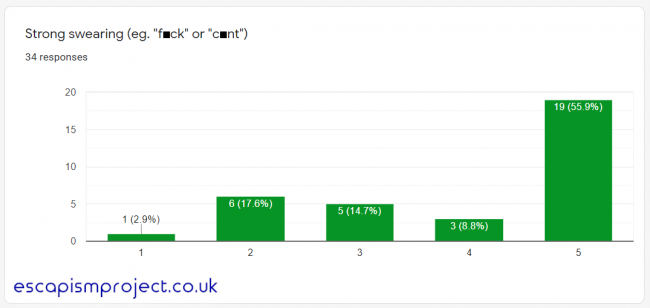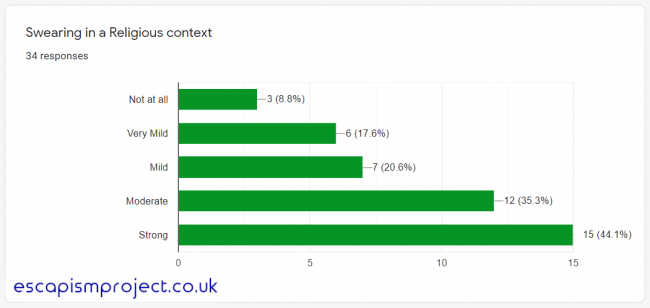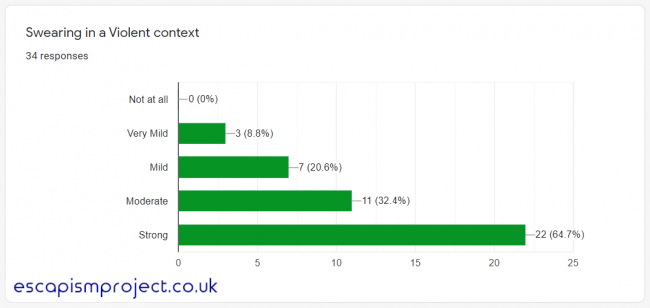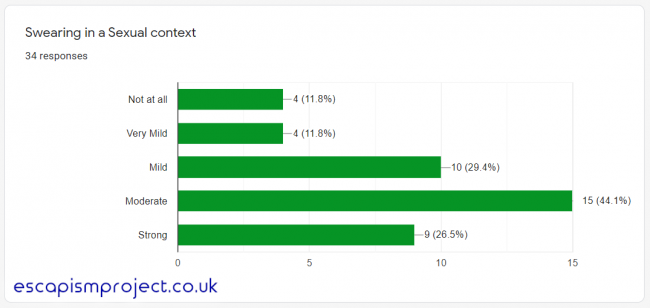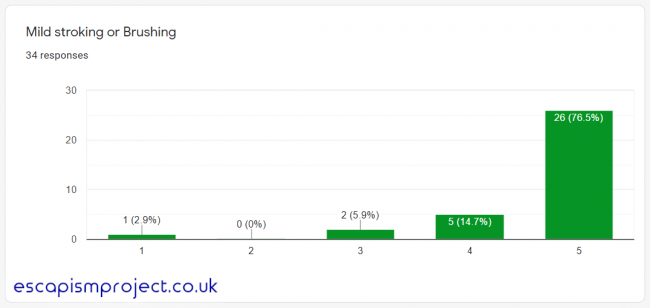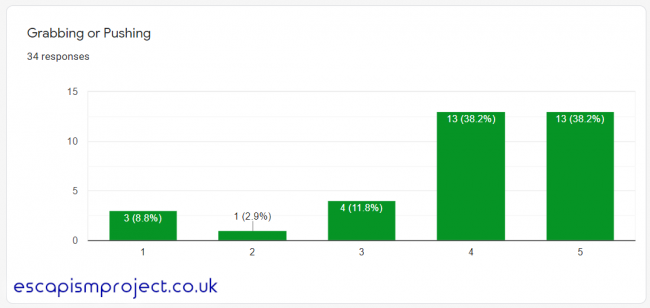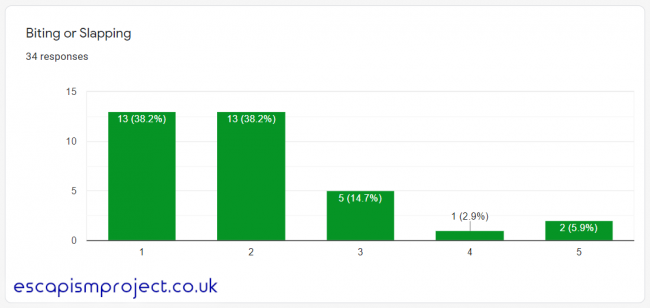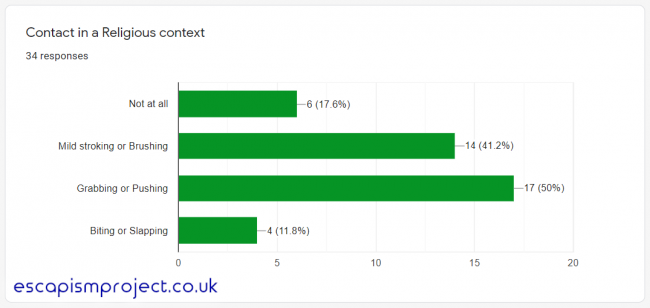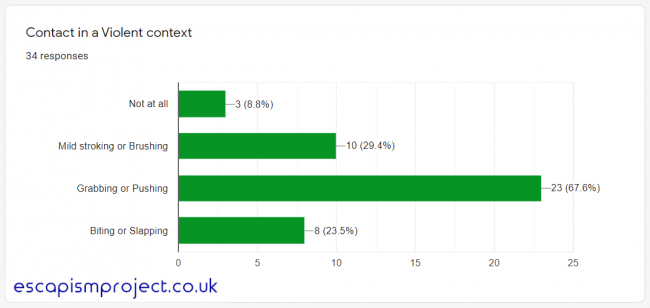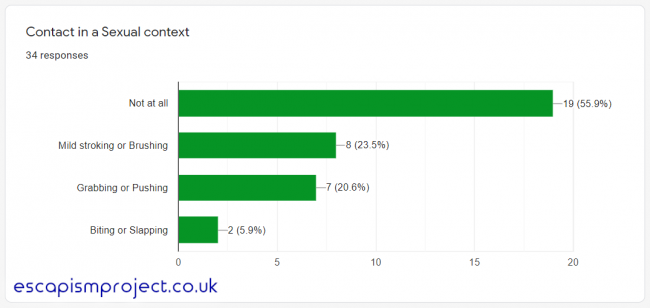
Content Description: Existentialism, Horror, Sex References, Ableist Language, Uncensored Moderate Language, Censored Very Strong Language. Not advised for younger readers or those easily offended.
As the nights draw shorter and the winds slowly creep in, many theme parks pursue something a bit spookier to entertain their guests over October as Halloween becomes fashionable. For some parks - particularly ones aimed at younger children - an abundance of bewitching bunting and a plethora of pumpkins is enough to create a creepy atmosphere, whereas attractions with wider demographics tend to venture into the theatrical thrills of Scare Mazes.
Scare Mazes, in essence, are an evolution of theatre. Instead of sitting down as an audience and watching actors perform on a stage over several hours, a Scare Maze invites you to actually step into the world presented, almost always aiming to frighten guests as they venture through cramped corridors and come face to face with an assortment of chaotic characters. Often, actors coated in blood and sweat will jump out of the darkness and taunt the unsuspecting, and in some cases, grab and push people around to further enhance the atmosphere. This type of walkthrough has become increasingly popular over the last two decades, with multiple "Scream Parks" - those being attractions dedicated to this fearful form of theatre - popping up all over the country, and trying to frighten as many people as possible with an endless array of poltergeists, clowns, and chainsaw-wielding madmen.
Horror has always been subjective, and somewhat taboo. To some, scary movies are the work of the devil and devastatingly disturbing - whilst some people can watch the bloodiest of films without wincing once. Knowing one's boundaries, and having some sort of prior knowledge of what one can expect from a work of art, is often essential knowledge, as there's nothing worse than accidentally viewing something that could be incredibly triggering. To ensure audiences are correctly educated on what they may witness, films and video games are usually given a rating by the BBFC or PEGI, so that the public can make sure that what they are participating in aligns with their comfort zone. When it comes to theatre, there are generally fewer restrictions. In 1968, Parliament abolished all stage censorship laws, and no formal classification committee was set up afterwards, meaning producers would be trusted to regulate and warn guests prior to entering the venue.
Theatre age restrictions and content warnings vary massively from show to show. Whilst most will carry a recommended age limit, very few will make this mandatory. Generally show warnings mainly state things such as "adult humour", "strobe lighting", and occasionally "some strong language". But, this isn't a condition that playhouses must abide by. The content warning for Les Misérables only notes "gunfire, smoke and flashing light effects", despite the show also including some moderate language and the occasional sex reference.
As mentioned earlier, Scare Mazes are also forms of Theatre. But with each experience being far sharper due to the interactive element, one could argue that they're more perverse and petrifying. The majority of mazes will have a restriction board outside their entrance (similar to the ones you can find on rollercoasters) that use generic terms such as "special effects including strobe lighting, smoke machines and theatrical makeup", and "dark confined spaces". Such descriptions are vague, and the impact of each element's execution varies massively from maze to maze. Age limits, too, are inconsistent; some mazes carry recommended restrictions, whereas some are exclusively for those above a certain age.
Thus raises the question that is at the forefront of this essay: In a maze with a 15+ age restriction, what is "inappropriate" for a maze? What crosses the line between enjoyment and genuine discomfort? Are there any themes or actions that shouldn't appear outright?
In order to paint a rough picture of what is deemed acceptable, we published a short survey asking 34 individuals several questions about what they would and would not be comfortable with in a Scare Maze. Out of those we asked, 82.4% were aged between 17 and 29, and a staggering 73.5% identified as male. The largest margin estimated they had experienced 20-29 attractions; everyone had done British mazes, with most having done some in mainland Europe, and a few in the USA as well.
It should be noted that content - in all forms of art - is subjective. What is fine for Person A, may be wildly inappropriate for Person B. It would be impossible to cater for everyone, so our findings are more of a generalisation. What is deemed acceptable also changes as the years pass.
Themes
The first set of questions were essentially warm ups to test the waters to get an inkling of what themes would be adequate, before giving them context. Generally speaking, around 45% of people had no reservations about mazes with religious, violent or existential themes, with a minority feeling less comfortable with them; only a couple deemed religious and existential ideas totally unacceptable. On the contrary, comfort around both sexual and mental health themes provoked very different reactions. 11.8% would find themes revolving around any form of sexual activity to be crossing a line, whilst 58% seemed less comfortable, but potentially still open to the idea. Mental health, however, is generally less likely to be acceptable; 20.6% would rather it not appear in any form, with a further 55.9% finding it distasteful - but perhaps still tolerable.
Whilst an estimated 40% of British people hold no religious beliefs, it's still a very sensitive subject to portray in a negative or unrealistic light. Horror often toys with religious connotations in films such as The Exorcist and Hellraiser, as playing around with the idea of a higher being - either good or bad - is an easy way to defer deeper meaning and push the limits of fear. Banishing guests to eternal damnation and deprivation in the depths of hell is common in horror, but with so many people holding faith, such works could potentially be seen as blasphemous - therefore it's not uncommon for fictitious works of terror to tease this idea in an attempt to be more edgy and 'forbidden'.
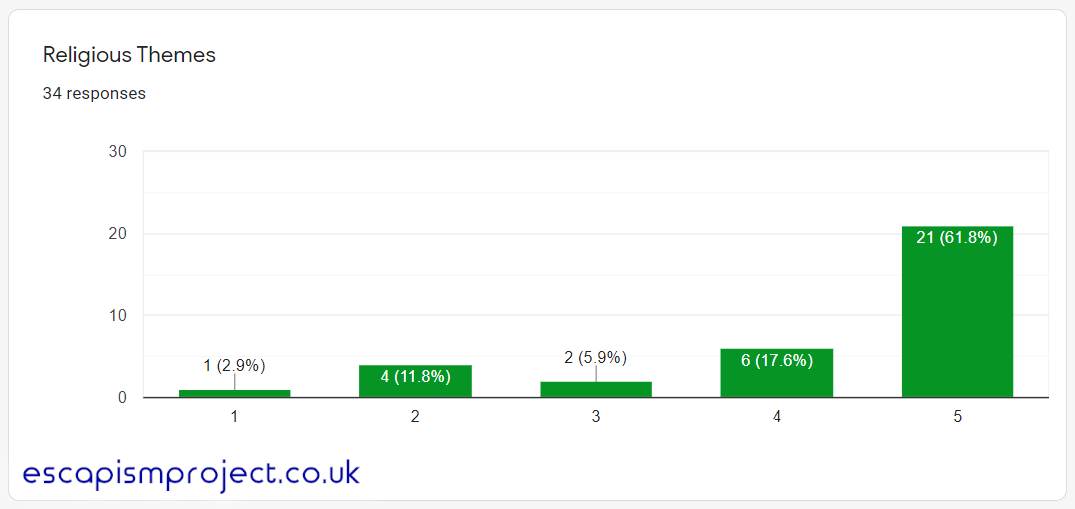
Violence is where breaking the fourth wall has the potential to be more damaging. When you're seated in a cinema or theatre, there's a physical boundary between the realms of reality and that of the fictitious. What happens between the characters is orchestrated and usually serves a greater plot purpose rather than being gratuitous, and there's a level of awareness and sensation of detachment when you're just viewing something. In this - and many other circumstances - if a particular scene in a movie is causing unexpected discomfort, it's easy to either shut your eyes, or skip past it if viewing at home. In a maze, distracting oneself is impossible; as you're directly involved in the action, you've got to keep your eyes open and power through, regardless of how difficult it may be. The sole idea of a maze is to completely immerse you, and give an impression you're directly involved with the story. Thus, violence can cause some upset; portraying aftermaths with faux dead bodies is generally fine, but if you're having actors wielding weapons, you've got to ensure the threat doesn't feel too serious to the point your guests feel genuinely unsafe.
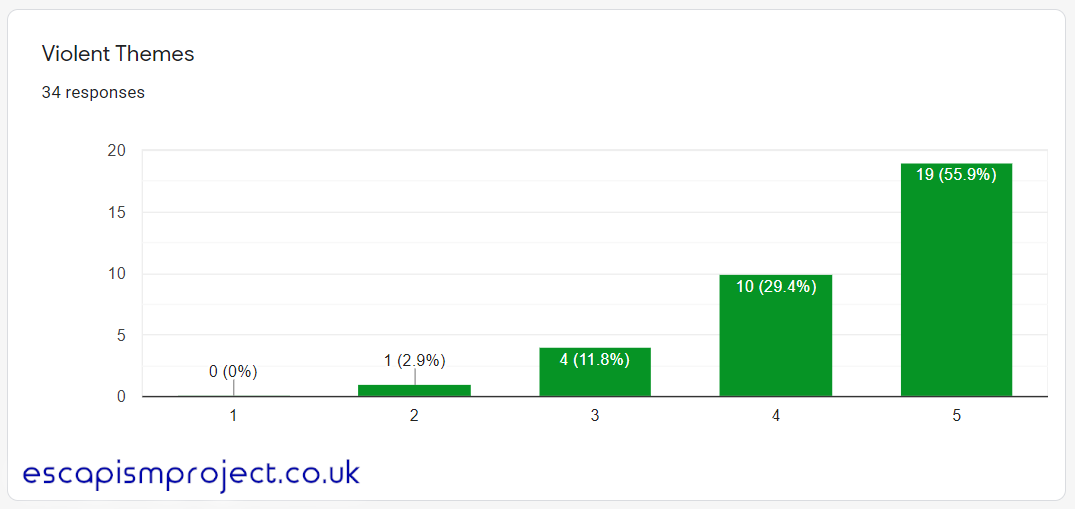
Existentialism is apparent in every art form - often subtle, sometimes as the centerpiece. Questioning why; what; how; asking about morality and the human condition, and pondering about what comes after this life - are all ideas that can instantly give far more meaning and substance to a piece. But with these questions almost always remaining ambiguous, and usually taking a darker turn in reference to death and dying, it makes sense that some would find existential ideas too challenging.
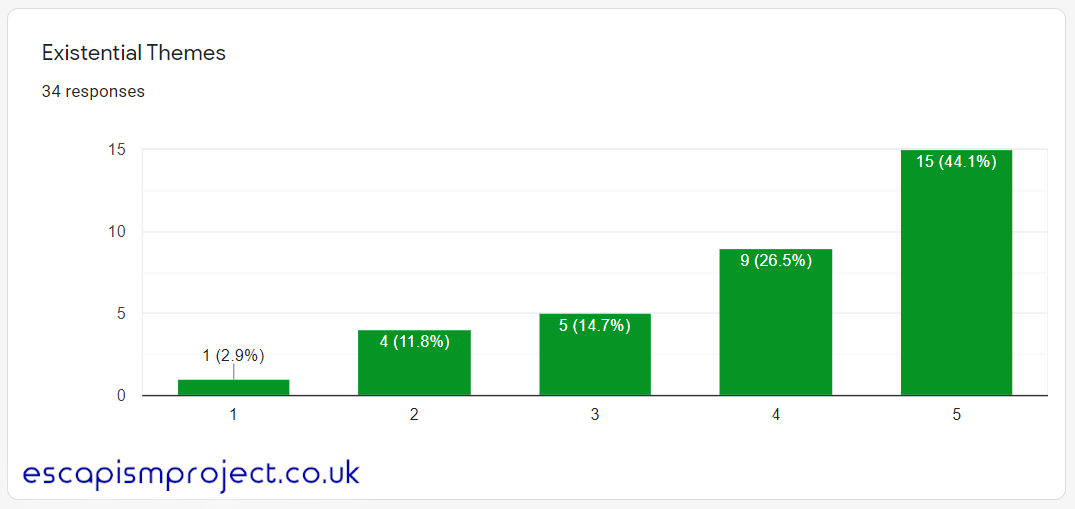
It was a given that the two latterly mentioned themes would be controversial. Sexuality has always been a taboo and private matter, so it's hardly surprising such a sensitive subject would likely be outlawed. However, it's not uncommon for sexual acts to appear on film - and more surprisingly the stage - but that's where the interactive element of mazes starts to differ things, as mentioned earlier. An exclusive issue with sexual themes may come from it crossing a line for those in a relationship. It would also cause concerns over actors safety, as it's sadly a possibility that a rowdy guest could take things a step too far and assault them.
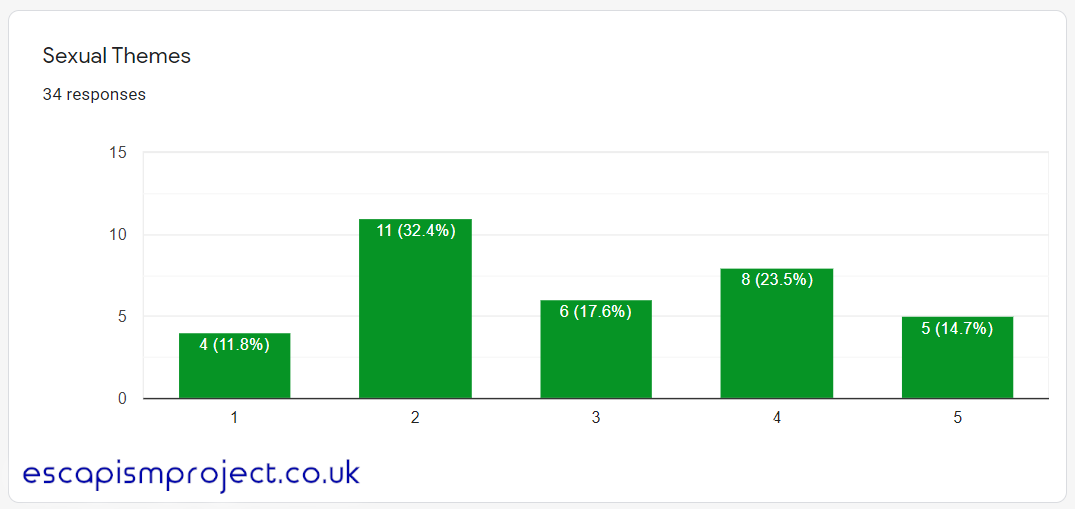
When it comes to mental health themes, the response received was also premeditated. Mocking the ill has become far less acceptable as awareness for conditions such as depression and schizophrenia take prevalence in the media, with many fighting for realism in dramatised stories. This is why there are less 'madhouse' themed attractions appearing, as it's instantly hurtful and damaging to those who are suffering from a mental health condition. As mazes are mostly short form, it's difficult to tell a story to educate, inspire - and be accurate - within mere minutes of entering. Portraying the ill as 'goons' is about as stigmatising as it gets - which is one of the reasons Thorpe Park's most famous maze, The Asylum, closed in 2013, as it was lobbied by activists that same season.
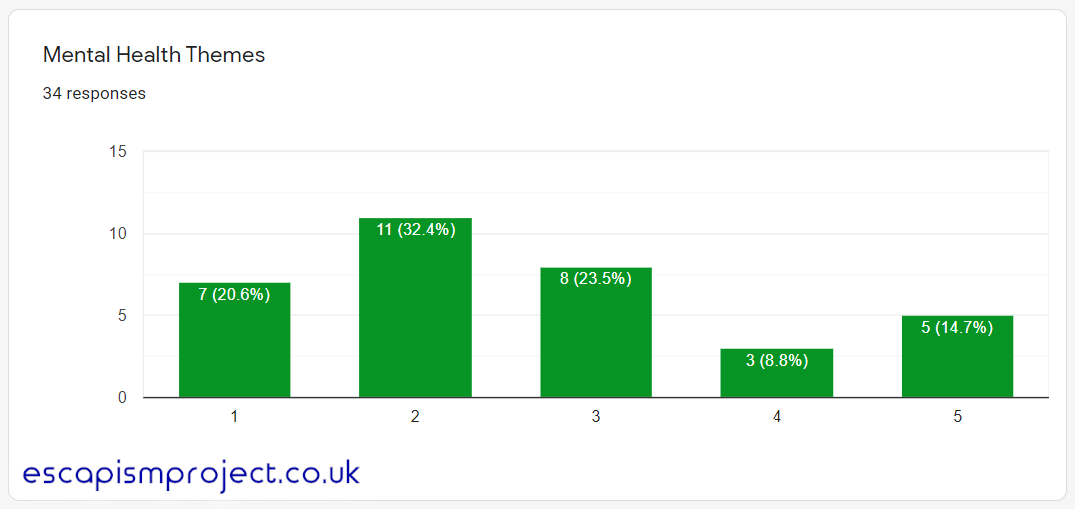
If done tastefully and with the right amount of maturity, it seems most themes are generally acceptable. In order to further discuss what would be "too far", we also gave people a chance to mention any other themes they found to be objectionable. Themes that are too graphic in sexual nature - especially those about assault - are certainly off the cards, as are stories that take inspiration from real, recent tales about suffering and terrorism in which people are still reeling from trauma, racist charicatures depicting the third world as savages, and glorifying illegal activity such as drug abuse.
Language
Secondary to this first set of questions, came comfort revolving around vulgar language. Swearing is usually used to accentuate meaning and as sentence enhancers, but generally such words aren't used in mazes. Nevertheless, as we set out to seek the limits of a 15+ maze, we asked how people would feel should such phrases be used out of context. Cursing in its mildest form, being words such as "damn" or "hell", would likely be acceptable, as an astonishing 97.1% had no qualms about hearing them. Mild - yet still offensive terms - such as "shit" or "piss" would also likely pass, with 82.4% being fine with hearing them - yet it is here where people gradually become less comfortable. Moderate swearing, including "bitch" or "bastard", gained a 70.6% pass rate, whilst 8.8% voters seemed comfortable, but less keen on hearing these words. Excelling to the king of curses, the results vary massively. Stronger language such as "f*ck" and "c*nt" saw 55.9% of voters have no issues, whilst 32.3% were unlikely to feel happy with their use - and a minority of 2.9% thought they shouldn't appear at all. However, our findings show that more people voted they were comfortable with stronger swearing depending on context than this generalisation.
1 - Word shouldn't feature outright *** 5 - No issues/reservations
Of course, context is key, and the way such words are said can completely change everything. A real world example can be found when comparing the use of swearing in Altonville Mine Tours at Scarefest and The Walking Dead: Living Nightmare at Fright Nights. Mine Tours took a humorous approach, in which a character stumbles on a line and accidentally slips out a swear:
"We've got some real good shit - shafts to show you."
Whereas Living Nightmare used it as an intimidation technique:
"Now which one of you pricks is the leader?"
In Mine Tours, as the swear "shit" is said for comedic value, it feels cheeky and carefree. There is a level of safety in this line when compared to Living Nightmare's use of "prick" to scare, where it can feel a little too brash, and come off the wrong way. It should be noted, however, that Living Nightmare was based off the popular Walking Dead franchise, and the character who performed this line is known for his tongue.
Applying some context to our hypothetical maze, our next few questions sought out to see what the worst swear you could say in each of the aforementioned themes from the first section was. Broadly speaking, most themes found an upwards of 40% comfortable with language of the strongest variety. Individually, religious themes saw 44.1% feel strong language was fine, with a decreasing number leading to a small 8.8% thinking swearing shouldn't be allowed at all. Swearing to enhance violent themes saw 64.7% fine with the strongest words (which is larger than our initial question suggested), with a further 32.4% thinking it shouldn't go past moderate swearing. Sexuality once again proved controversial; just over a quarter (26.5%) were comfortable with "f*ck" and its derivatives, which contrasts the 11.8% who wouldn't be ok with any questionable language whatsoever. Existential swearing more or less lines up with our findings for violence, with 58.8% finding any swear acceptable, and no-one thinking it should be outlawed.
It seems that swearing - if used sparingly and smartly - is fine in mazes. Like the first vague questions about themes, we asked if there were any other uses of bad language that shouldn't feature. As long as it's contextualised and infrequent, people seem ok - but discriminatory or racial slurs are recognised as wildly inappropriate - and for good reason. However, one such answer says these are fine if talking about something which is clearly fictitious, such as aliens or other worldly creatures.
Physicality
Our final category asked how people would feel with actor to guest contact. Modern mazes tend to have cast members physically touch the audience to further taunt or guide them round, and this can often greatly affect one's enjoyment. Some 15+ mazes use contact sparingly and lightly, whereas some tend to be a bit more aggressive and forward with shoving. 76.5% held no reservations with mild stroking or brushing - however, this being the mildest form of contact we listed, some few were already uncomfortable with this idea, with 2.9% wishing to keep their own space. Grabbing or pushing saw the results change considerably; 38.2% were fine with this, whilst 14.7% seemed uncomfortable, but perhaps ok - and another 8.8% disagreeing with this form of contact altogether. Pushing things to the extreme, 38.2% found biting and slapping to be unacceptable, with only 5.9% being totally accepting of it.
1 - Action shouldn't feature outright *** 5 - No issues/reservations
Putting contact into themes reveals people tend to be much more conservative over touching, regardless of theme. Religious mazes found a perfect 50% of guests wanting nothing more than a grab or push, whilst 17.6% wanted to remain untouched. Violence, surprisingly, saw 23.5% ok with biting or slapping, and a whopping 67.6% fine with grabbing or pushing. This was incredibly surprising, considering that violent contact can push people to feel unsafe; but it seems in mazes, it's more acceptable than previously anticipated. But what isn't surprising is how people feel about contact within sexual themes; 55.9% deemed this far too much to handle, with 23.5% fine with a simple brush or stroke of the hair. Existentialism is an odd theme for touching, but nevertheless, 55.9% were ok with a shove.
It seems that if you want accessibility, you shouldn't go further than grabbing or pushing, and contact shouldn't feel genuinely threatening, and certainly not painful. It should be contextualised and serve a purpose, rather than just pushing someone as the main part of an attraction.
Concluding our research, we asked if there was anything else people deemed as "too far". Discounting things already mentioned, inflicting genuine harm - whether physically or psychologically - is unquestionably morally unacceptable. Anything that happens within an attraction should serve a purpose and hold a valid, satisfying context, and audiences should be made aware of what may feature before entering.
Having some sort of prior knowledge as to what one can expect from a maze is vital to ensure guests are comfortably uncomfortable, hence why restriction boards and safety briefings are all too common. Without spoiling anything, vague warnings inform audiences of what they can expect, and if they choose to enter after heeding these cautions, they are essentially consenting to whatever may happen inside - within good taste, of course. If someone is ill prepared and ignores these briefings, and gets too spooked, then the warnings are either not substantial enough, or they haven't observed the rules correctly. This is why some mazes enforce strict age restrictions, to ensure that only those who are capable of handling such horrors are able to do so.
Some attractions are dubbed 'extreme', and are strictly limited to an adult audience. Within these experiences, virtually anything can appear, including intense, intrusive contact, nudity, and force feeding. As these attractions are even more horrific than scare mazes - and some flat out refuse to acknowledge them as mazes - entering requires signing a waiver to ensure you've fully understood what you're about to experience, and many come with safe words, should you feel too violated to continue.
In 15+ mazes - which is generally the industry standard - it's important to remember that they must be capable of frightening adults, as well as teenagers who feel brave enough. Fear is also subjective - some find clowns absolutely terrifying, whilst others still relish their comedic skills. It can be tricky to strike gold and find something that's suitable for such a wide demographic, especially as fears change as we become more resilient in age, and what society decides is acceptable morphs into something else. This is why it's not uncommon for older films to be re-rated at a lower classification; as we're exposed to more striking work, older ones sometimes lose their power.
With our research complete and analysed, how far can you go in a 15+ maze? Based on our findings, you can theme a maze around virtually anything, but if it revolves around sex or misrepresentation, it's unlikely to be favourable. Swearing is acceptable, providing its contextualised; it's important it should be considered before scripting bad language. Contact can occur, but shouldn't be too aggressive, and certainly not worthy of inflicting pain.
So, if you're designing a maze for fun, or as a profession; consider your audience, make sure you don't cross a line, and most importantly, ensure that they can be scared safely, whilst still enjoying the experience.
